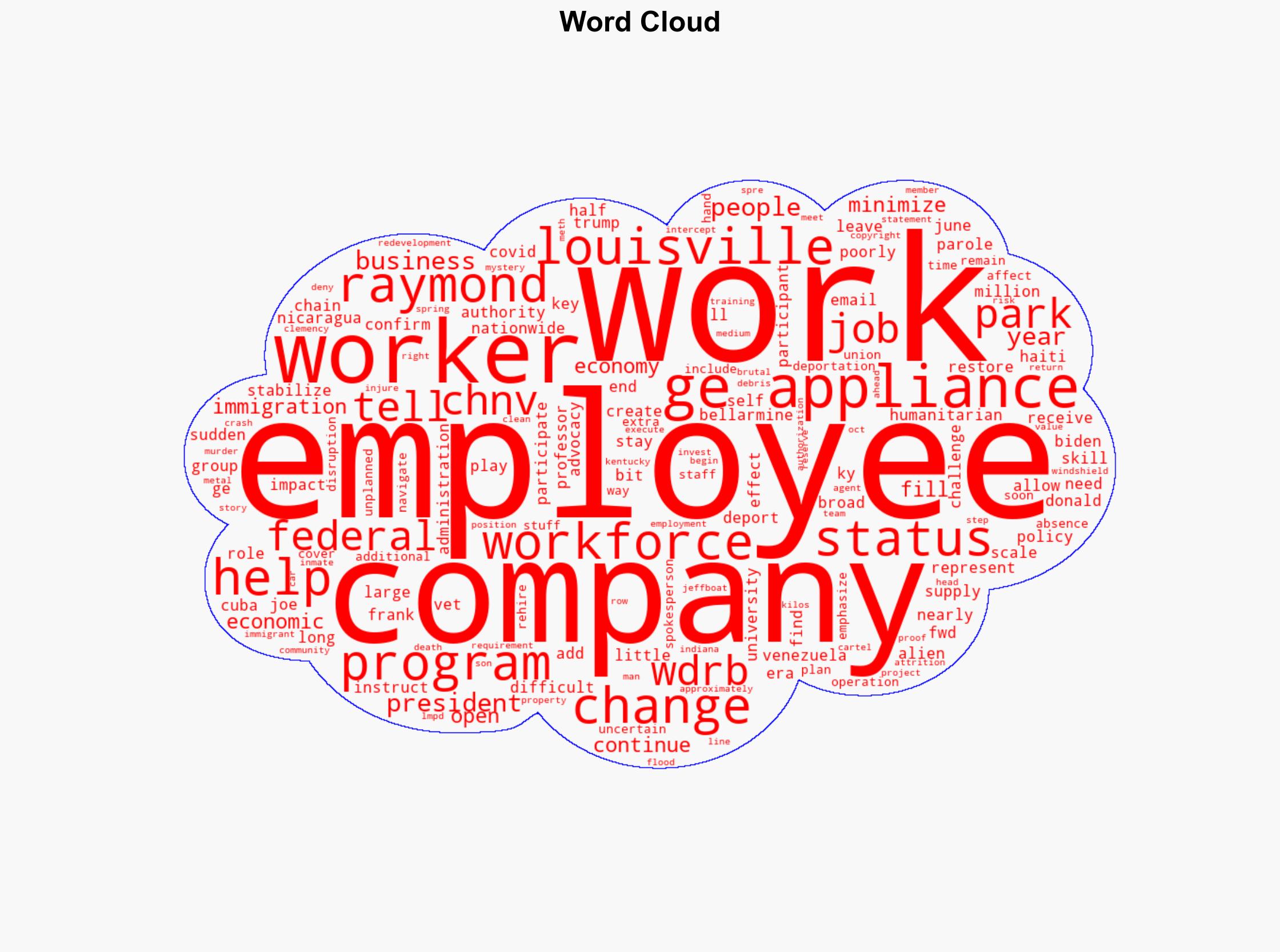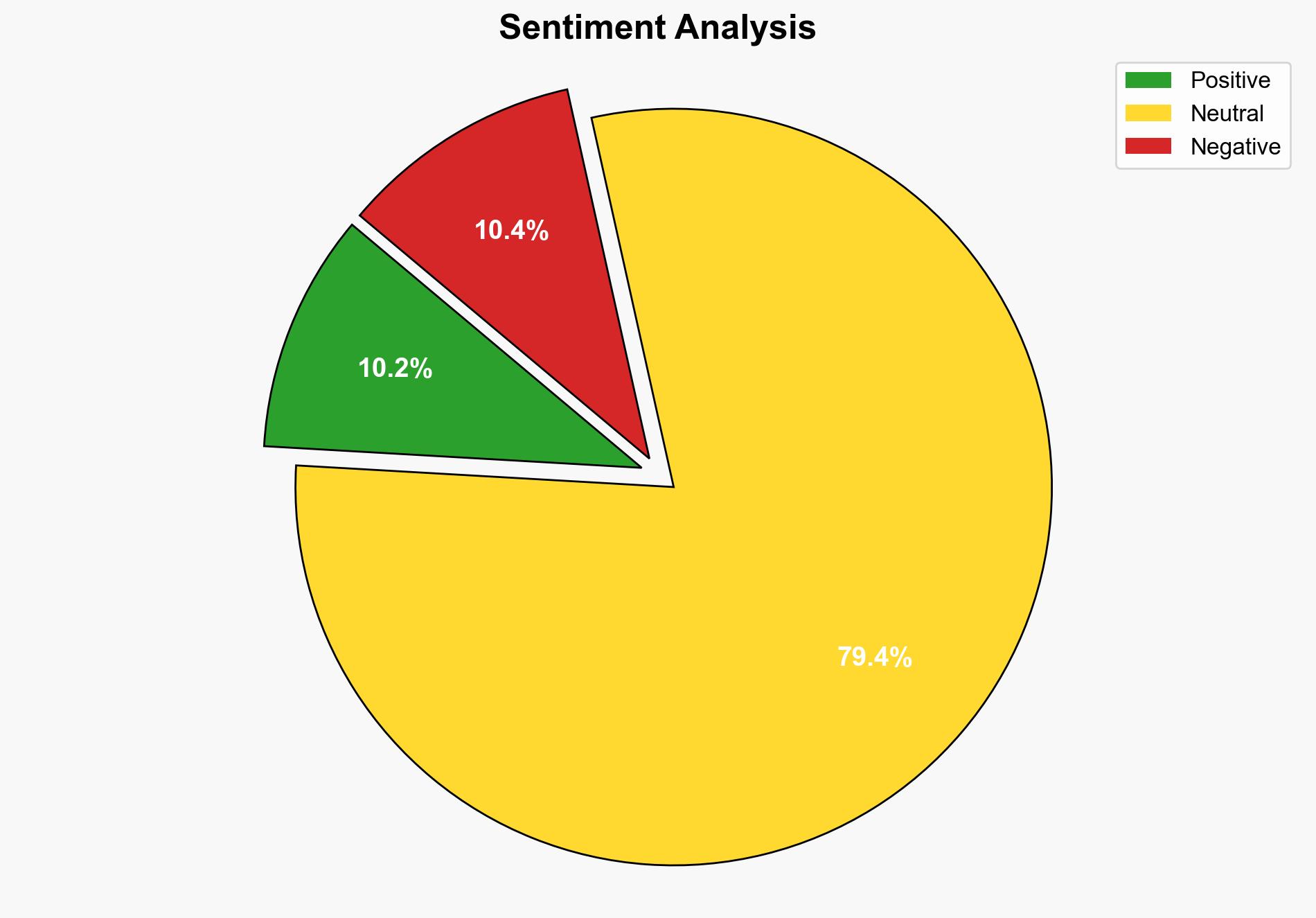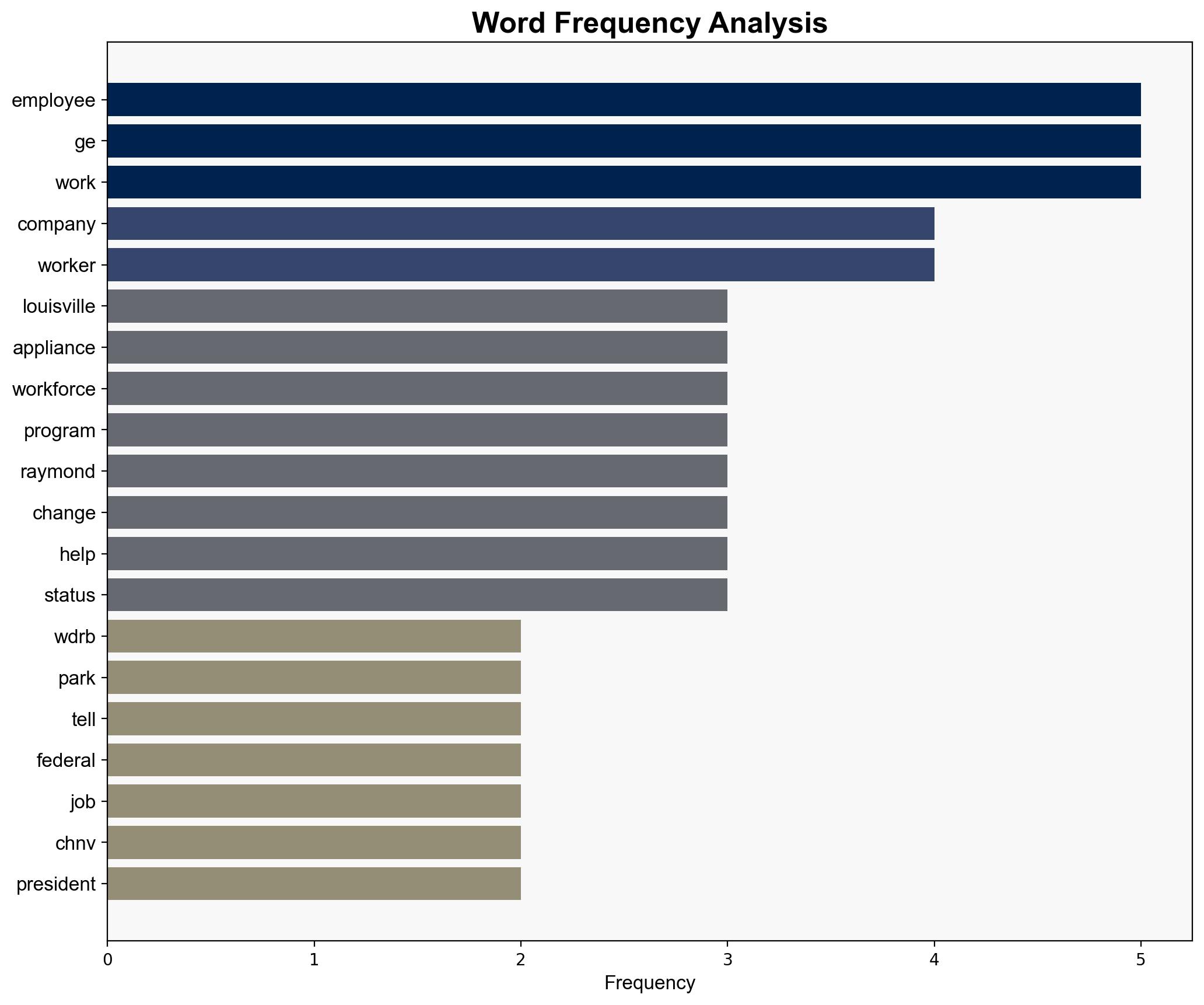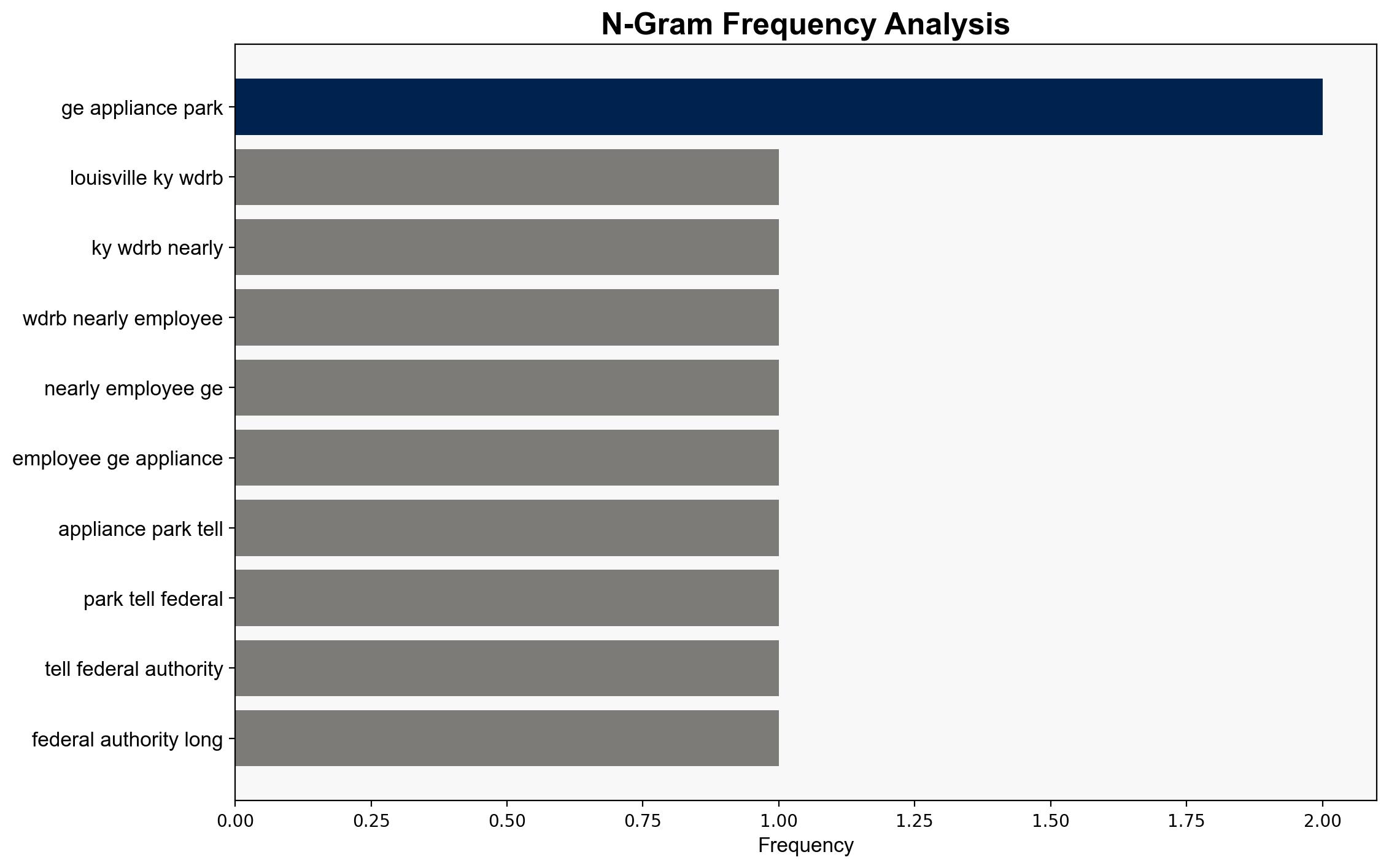Nearly 150 GE Appliance Park workers told to self-deport after Trump ends Biden-era program – WDRB
Published on: 2025-09-30
Intelligence Report: Nearly 150 GE Appliance Park workers told to self-deport after Trump ends Biden-era program – WDRB
1. BLUF (Bottom Line Up Front)
The termination of the Biden-era CHNV program by the Trump administration has led to significant workforce disruptions at GE Appliance Park, affecting nearly 150 employees. The most supported hypothesis suggests that the sudden policy change will create short-term operational challenges for businesses reliant on immigrant labor, with broader economic impacts remaining uncertain. Confidence Level: Moderate. Recommended action includes strategic workforce planning and advocacy for policy clarity.
2. Competing Hypotheses
Hypothesis 1: The termination of the CHNV program will lead to immediate operational disruptions at GE Appliance Park, causing a ripple effect on local and national supply chains.
Hypothesis 2: The impact of the CHNV program termination will be minimal in the long term, as businesses will adapt by hiring local workers or automating processes.
Using ACH 2.0, Hypothesis 1 is better supported due to the immediate nature of workforce changes and the reliance on specific skills that may not be readily available in the local labor market.
3. Key Assumptions and Red Flags
– Assumption: The skills of the CHNV program participants are not easily replaceable in the short term.
– Red Flag: Lack of detailed data on the specific roles and skills of affected workers.
– Potential Bias: Over-reliance on economic forecasts without considering potential policy reversals or interventions.
4. Implications and Strategic Risks
The immediate workforce disruption could lead to delays in production and increased operational costs for GE Appliance Park. If similar actions occur at other companies, there could be a broader economic impact, affecting supply chains and consumer prices. Additionally, the policy shift may lead to increased tension between federal and local governments, especially in areas heavily reliant on immigrant labor.
5. Recommendations and Outlook
- Short-term: Develop contingency plans to address workforce shortages, including temporary staffing solutions and skill development programs.
- Medium-term: Engage with policymakers to advocate for immigration reforms that support economic stability.
- Long-term: Invest in automation and workforce training to reduce dependency on specific labor pools.
- Scenario Projections:
- Best: Policy reversal or new immigration measures mitigate workforce impacts.
- Worst: Prolonged labor shortages lead to significant economic downturn.
- Most Likely: Gradual adaptation with moderate economic disruptions.
6. Key Individuals and Entities
– Frank Raymond, Economics Professor, Bellarmine University
– GE Appliance Park
– Immigration advocacy group FWD
7. Thematic Tags
national security threats, economic stability, immigration policy, workforce management





